-
Posts
9,099 -
Joined
-
Last visited
-
Days Won
3
Content Type
Profiles
Forums
Blogs
Gallery
Events
Store
Posts posted by Kev in Deva
-
-
Beautiful piece,

As the box is marked for King Michael I
first we need to determine was it even awarded in King Michaels Reign. He reigned from 20 July 1927 to 8 June 1930, and again from 6 September 1940 until 30 December 1947 when he was forced, by the Communist Party of Romania (backed up by orders of Joe Stalin, to abdicate to the Soviet armies of occupation.
Queen Marie of Romania (was the grand-daughter of Queen Victoria of England; and daughter of Prince Alfred; Duke of Edinburgh and Saxe-Coburg) was noted for her extensive efforts in the care and nursing of wounded Romanian soldiers in WW1, her is a bio on her:-
She was born on 29 October 1875 at Eastwell Park in Kent, the eldest daughter of Prince Alfred, Duke of Edinburgh, and Grand Duchess Maria Alexandrovna of Russia.
Her father was the second-eldest son of Queen Victoria and Prince Albert. Her mother was the only surviving daughter of Alexander II of Russia and Maria Alexandrovna of Hesse.
She was baptised in the Private Chapel of Windsor Castle on 15 December 1875 and her godparents were the Empress and Tsarevitch of Russia (her maternal grandmother and uncle), the Duchess of Saxe-Coburg and Gotha (her paternal grandaunt), the Princess of Wales (her paternal aunt) and the Duke of Connaught (her paternal uncle).
As her father was in the Royal Navy, she spent much of her early childhood abroad, particularly in Malta.[1]
In her youth, Princess Marie was considered a suitable match for marriage to the Royalty of Europe. Her first cousin, Prince George of Wales, later King George V of the United Kingdom, fell in love with her and proposed marriage. Marie's father and George's father approved of the marriage, but their mothers did not. Marie's mother did not like the British Royal family and George's mother did not like Germans so the idea of a marriage was mixed.
Before Marie could find someone else suitable to marry, her mother found Ferdinand of Romania. He was the German-raised nephew of the King of Romania (and a distant cousin of the rulers of Prussia).
Princess Marie married Prince Ferdinand of Romania, nephew of King Carol I of Romania in Sigmaringen, Germany, on 10 January 1893. The bride was 17 years old and the groom was 10 years her senior. (Marie's father did not become Duke of Saxe-Coburg-Gotha until a few months later.)
The marriage, which produced three daughters and three sons, was not a happy one.[2] Her correspondence with her longtime secret confidante, the American dancer Loie Fuller, revealed "the distaste, which grew to revulsion" that Marie felt for her husband.[3]
The couple's two youngest children, Ileana and Mircea, were born after Marie met her long-time lover, Barbu Ştirbey. Historians generally agree that Ştirbey was the father of Prince Mircea, who had brown eyes like Ştirbey, unlike Marie and Ferdinand.[4]
The paternity of Ileana is uncertain, as is the paternity of Marie's second daughter, Maria (known as Mignon), the future Queen of Yugoslavia.[2]
Ferdinand's paternity of the three other children, Carol, Nicholas and Elisabeth, has not been disputed.
In 1897, while still Crown Princess, Marie began a romantic liaison with Lieutenant Zizi Cantacuzene.[2] The affair and subsequent scandal became widely known and was quickly terminated by King Carol I. However by autumn 1897, during the height of the scandal, Marie became pregnant. After fleeing to her mother in Coburg, Marie apparently gave birth to a child who has disappeared from history.[2] It has been suggested that the child was either stillborn or quickly placed in an orphanage. Whatever the truth, 'the story of this mysterious child of Marie of Romania was one secret "she took to the grave.
In 1899 Marie, pregnant with Mignon, pleaded with King Carol I to allow her to give birth in Coburg, where her father was Duke. Upon the king's refusal of this request, Marie declared 'right to his face' that the child she was carrying was in fact Grand Duke Boris Vladimirovich of Russia's.[2] The horrified King relented and Marie gave birth to her daughter, also called Marie but always known as Mignon, in the peaceful surroundings of Coburg. Following this, whether in earnest or merely to deflect criticism from the dynasty, Crown Prince Ferdinand officially recognised the child as his.
Marie's fourth child and second son, Prince Nicolas, was born in August 1903. The appearance of Pauline Astor, the sister of Marie's close friend and confidant Waldorf Astor, along with an Astor family doctor during the birth fanned speculation that the father of Prince Nicolas was in fact Astor and not Crown Prince Ferdinand. As with Mignon, Ferdinand accepted the child as his own and as he grew up Nicolas came to resemble his Hohenzollern relatives rather than the Astors
In 1914, Carol I died and Ferdinand ascended the throne of Romania. Crown Princess Marie then became styled Her Majesty The Queen of Romania. Due to World War I, they were not crowned as King and Queen until 1922.
Marie had become a Romanian patriot, and her influence in the country was large. A.L. Easterman writes that King Ferdinand was "a quiet, easy-going man, of no significant character… It was not he, but Marie who ruled in Romania." He credits Marie's sympathies for the Allies as being "the major influence in bringing her country to their side" in the war.[5]
During the war, she volunteered as a Red Cross nurse to help the sick and wounded and wrote a book titled My Country to raise funds for the Red Cross, but these were by no means her most notable contributions to the war effort. With the country half-overrun by the German Army, she and a group of military advisers devised the plan by which the Romanian Army, rather than retreating into Russia, would choose a triangle of the country in which to stand and fight; and through a letter to Loïe Fuller she set in motion the series of events that brought a timely American loan to Romania, providing the necessary funds to carry out the plan. (Fortuitously, the young woman from the US embassy who delivered the letter to Fuller was the former ward of Newton D. Baker, by this time serving as U.S. Secretary of War. Fuller and the young woman travelled from Paris to Washington, DC and secured an audience with Baker who, along with U.S. Secretary of the Treasury Carter Glass, arranged the loan).
After the war ended, the Great Powers decided to settle affairs at the Paris Peace Conference. The Romanian objective was to secure the Romanian-inhabited territories from the now-defunct Austria-Hungary and Russian Empire, thereby uniting all Romanian-speakers in a single state. Romanian diplomats at the peace conference sought to achieve recognition by the Allies of the Unions of Bessarabia, Bukovina, and Transylvania with Romania, proclaimed during 1918.
With the Romanian delegation losing ground in the negotiations, Prime Minister Ionel Bratianu called upon the Queen to travel to France. Marie famously declared that "Romania needs a face, and I will be that face," astutely calculating that the international press was growing tired of the endless negotiations and would be unable to resist the glamour of a Royal visit. The arrival of the so-called Soldier Queen was an international media sensation and she argued passionately that the Western powers should honour their debt to Romania (which had suffered a casualty rate proportionately far greater than Britain, France or the USA). Behind the scenes, she alternately charmed and bullied the Allied leaders into backing the Romanian cause.[2] As a direct result of her charismatic intervention, Romania won back the initiative and successfully achieved all its pre-conference aims, eventually expanding its territory by 60%, gaining Bessarabia, Bukovina, Transylvania, as well as parts of the Banat, Crişana and Maramureş.
Marie's son, the Crown Prince Carol (later King Carol II of Romania), was never close to his father, Ferdinand—by the time Carol was an adult, their antagonism became an "open breach"[5]—but there continued to be a "deep bond of affection and sympathy" between Carol and Marie.[5] Their relationship, however, deteriorated. The initial conflict came over Carol's objections to Marie's relationship with Prince Ştirbey; the breach was exacerbated as Marie attempted to steer Carol toward a dynastic marriage rather than allow him to choose his own bride.[5]
During Carol's exile in Paris, Loïe Fuller had befriended Carol and his mistress Magda Lupescu; they were unaware of Fuller's connection to Marie. Fuller initially advocated to Marie on their behalf, but later schemed unsuccessfully with Marie to separate Carol from Lupescu.[3] Eventually, when Carol became King and did not seek her counsel, the breach between mother and son became complete.[6]
After the death of her husband in 1927, Queen Marie remained in Romania, writing books and her memoirs, The Story of My Life.
She died in Peleş Castle on 18 July 1938, and was buried next to her husband in the Monastery of Curtea de Argeş. In accordance with her will, her heart was kept in a cloister at the Balchik Palace which she had built.
In 1940, when Balchik and the rest of Southern Dobrudja were returned to Bulgaria in accordance with the Treaty of Craiova, Queen Marie's heart was transferred to Bran Castle. This had been her principal home for much of the early 20th century, and the artefacts with which she chose to surround herself (traditional furniture and tapestries, for example) can be seen by visitors today.
Many of her other personal effects can be seen at the Maryhill Museum, formerly the home of Samuel Hill, an American railroad businessman with whom Queen Marie corresponded much of her life. The famous museum, which lies in Washington State (U.S.A.) on the north side of the Columbia River, displays much of Queen Marie's regalia, furniture, and other possessions, including her crown.
She was the 1,007th Dame of the Royal Order of Queen Maria Luisa.ORDER of QUEEN MARY CROSS / ORDINUL "CRUCEA REGINA MARIA"
(D.R. / Royal Decree Nr. 85/3 II 1917 and D.R. / Royal Decree Nr. 1069/18 IX 1917.
Awarded in i - II - III Classes
for Merit in Medical work connected to World War 1 and in Peacetime.
Will do some checking and get back to you on this.
Kevin in Deva.
EDIT :- this award:-
recently sold on Evil bay shows a III Class WW2 period award with Brevet
which were authorized under a Decree in 1938 according to the seller
0 -
Three WW2 German Insignia's Real Deal or Fake?
Pictures at the link:-
http://gmic.co.uk/index.php/topic/58774-three-ww2-german-insignia-real-deal-or-fake/#entry548569
Any help appriciated.
Kevin in Deva.
 0
0 -
Hello Kev,
Peter named the pic De Jaeger, so I suppose his name is De Jaeger.
I believe the small medal is a MBE .
The man might have been a Belgian Allied agent, I suppose. I will ask Peter.
kind regards,
Jef
Yes its a Member of the British Empire medal (instituted in 1917)
with what appears to be the first type version of the "military" ribbon, the military ribbon was instituted in 1918
this model had a thin red stripe in the center.
They were officialy issued un-named but many were named privately by their receipiants.
Fewer than 2000 medals were awarded before they were discontinued in 1922.
0 -
Hello again, Kev
Have been looking to the enlarged pic.... and is it possible the good man wears a British and a Belgian Inter Allied War Medal?
Don't think it would have sense to wear two Belgian Victory medals.
Jef
Hallo Jef,
No, he is wearing two Belgian Victory medals for sure,
the design of the British medal is different to the Belgian ones
as is the ribbon colour arrangement.
Please see attached pictures:-

British model to the left.

2 Belgian models.
Kevin in Deva.
0 -
Hi Jeff,

WOW!

Many thanks to your friend Peter.
Thats a fantastic picture, I see he sports a British War Medal and two Belgian Inter-Allied War medals
but, what is the small medal (last on the top row after the BWM)?
Is his name known?
Kevin in Deva.
 0
0 -
Ok I also got the folowing in:-
"WOUND MEDALS, INSIGNIA AND NEXT-OF-KIN AWARDS IF THE GREAT WAR"
By ARTHUR H. HOUSTON and VICKEN KOUNDAKJIAN.
Instituted on the 17 February 1922 for those more that 30% or more incapacitated by wounds, injured by illness incurred on active service, The wool serge brassard is approximately 8cm by 44cm and is in the colours of the Belgian War Commemorative Medal, it features a metal silver 5-pointed star 25mm in diameter. To the right of the star is the seal of the Ministry of National Defence roughly 37mm in diameter.
All authorised issues bear this stamp, brassards without this seal and in materials other than wool serge should be viewed with caution as probably being unofficial.Kevin in Deva.
0 -
Many thanks for the info Jeff

love the "man of the world" comment

Kevin in Deva.
0 -
Some info via one of the other militaria forums I frequent:
"his full name was Thomas M. L. Neish, he was entitled to the Victory & BW Medals and had the SWB (Silver Wound Badge) No. D/A/1057.
Kevin in Deva.
0 -
Hallo Jef,

thanks for the i.d. of the item,

I presume for WW1 wounded veterans?
the ends of mine have stiching but just hemmed at the ebds and not sewn to gether,


I think the large clip was being used to fasten the ends for wear.
Do you know the requirements for issuing the brassard?
Kevin in Deva.
 0
0 -
http://gmic.co.uk/uploads/monthly_05_2013/post-950-0-57694400-1368721048.jpghttp://gmic.co.uk/uploads/monthly_05_2013/post-950-0-37808700-1368721096.jpg
My latest acqusition, located in Slatina-Olt, Romania.
Has been polished, but 99% of the detail remains.
Stamped on the edge:-
53585 CPL. L. NIESH R.S. FUS.Bring to six the number of British War Medals in my collection.


It joins the other 5 British War Medals in my collection:-
91340 Dvr. J. Murray Royal Artillery.
118340 Pnr. J. R. Farrell Royal Engineers.
4615 Pte. T. McKenna Connaught Rangers.
M2-055305 Pte. H. Croucher Army Supply Corps.
838 Cpl. L.W. Martin Royal Engineers.Kevin in Deva.
0 -

Recently acquired this from a Romanian chap, the ribbon bears the colours of the Belgian Commemorative medal for WW1 if I recall correctly?
Its approxamatly:- 43cm x 8cm
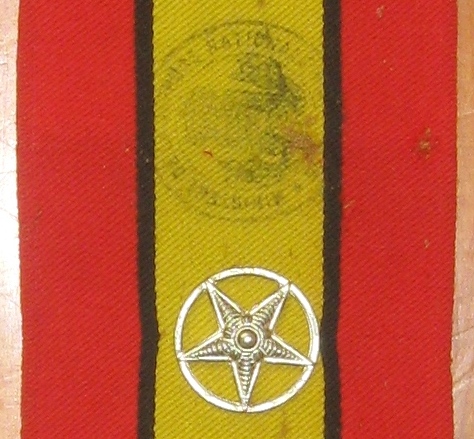
It has a silver star in a circle which is marked to the rear: "R.J. DE. ROOSTER - BRUXELLES."
it also has an Ink stamp.
There was also a large clasp type pin often seen for wearing medals on uniforms or civil suits.
The pin is marked: "DEPOSE"
Any ideas what it was for?
Kevin in Deva.

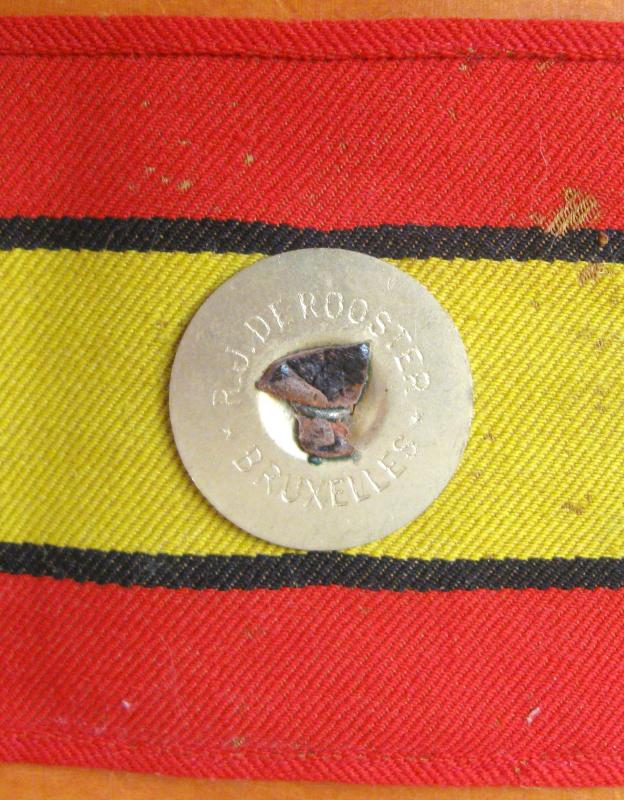 0
0 -
I think its for a Polish Medal.
0 -
This chap hangs on the wall of my home office, Flea-market find when I lived in Bavaria:-
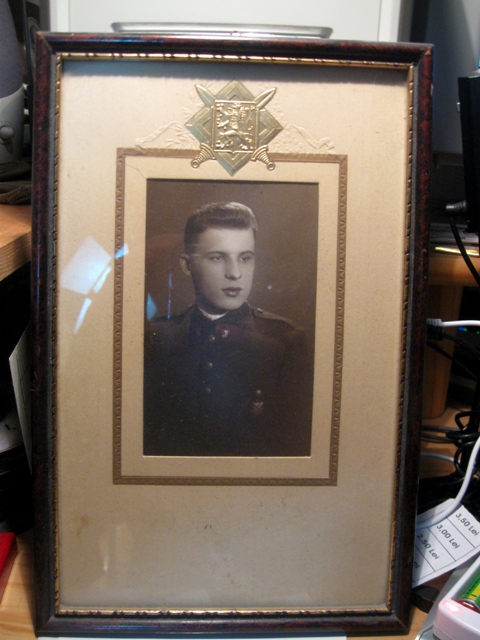
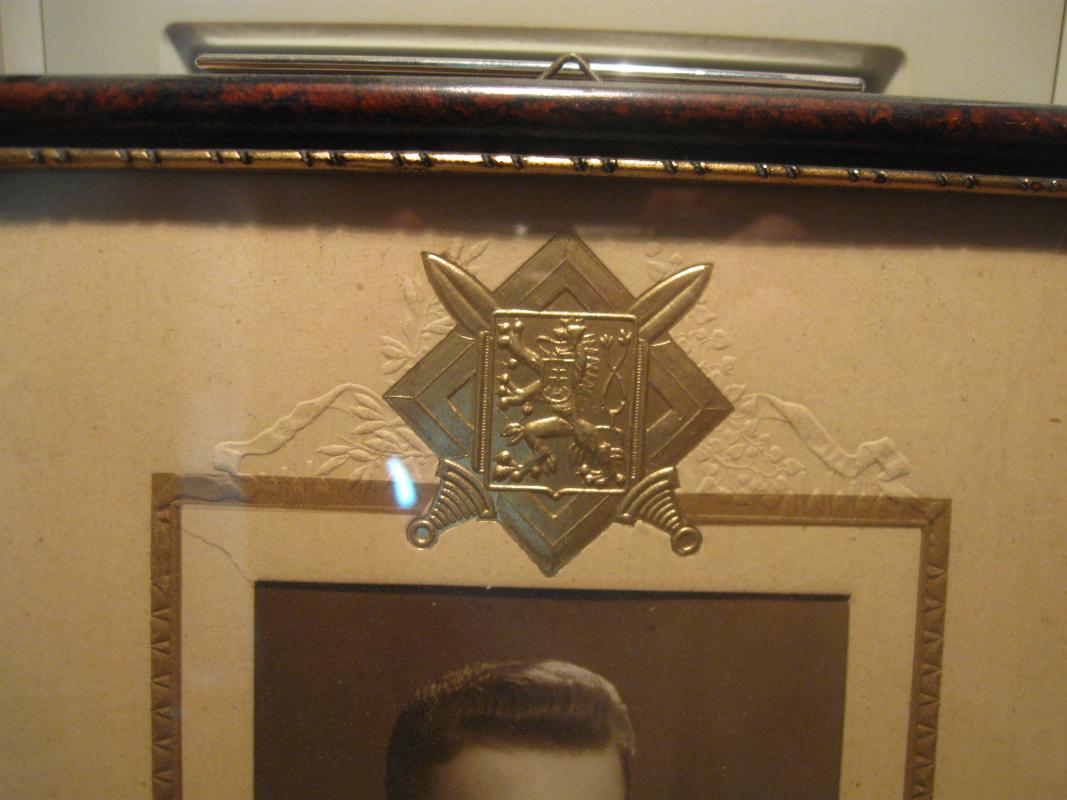
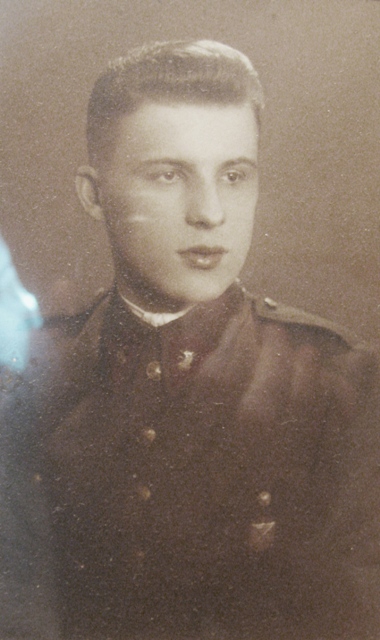
Very sure its the same emblem embossed on the picture of this unknown soldier and the uniform is circa before / during WW2.
Kevin in Deva.
 0
0 -
The Middlesex Regiment I beleive.
Kevin in Deva.
0 -
Number 10: Italian Military Merit Medal.
0 -
There is no reason to my mind why you cant add the badge to the uniform to represent an Officers typical awards,
without an actual:- "LIVERT MILITAR" or "CERTIFICAT RADIOTELEGRAFIST "
nobody can argue with your display.

Kevin in Deva.
0 -
L.S.A. = Lahore Small Arms ?
0 -
Thanks Kevin for this nice informations but in fact I would like to know if this examination of specialist was compulsory ? For exemple, are there some officers who never passed this examination and thus never received this insigna ?
As I stated in my above post:-
" all Military officers, had to undertake the relevant examinations and pass before being awarded the relevant grade badges."
If, you took the exam, (any exam) and fail, (and of course people did fail from time to time) you get to try again, until you succeed.
Kevin in Deva.
0 -
Hallo Gents,

To be more acurate in my opinion, the large bar, is both military and civil, to an old soldier, who started his career by going on the 1913 Balkan Campaign, its very possible the person was a military doctor and at number 3 possibly from Italy, the Order of the Crown.
The reason he is military is the inclusion of the ribbon Romanian Inter-Allied Victory medal,
this was only given to military men who took active part in WW1 in combat,
the decree allows its award to medical staff who saw service in the front lines.
The Romanian Commemorative Cross of War would back this up as well.
One thing I have noticed in Romanian ribbon bars and medal bars from studying period pictures and medal bars in the Romanian Military Museum, scant regard was paid, back then to the regulations with regards placement and the wearing of all ones awards, I have pictures where the same man sports his medals singular or in a group, even high ranking officers were laxadaisical in this regard.
Kevin in Deva.
0 -
Hello
Somebody could tell me if all officers were obliged to pass the examination of specialist ? Or its was an option ?
In the booklet:-
CERTIFICAT RADIOTELEGRAFIST
DE CLASA : 1-a, 2-a, 3-a.
Din FORTELE ARMATE ale R.P.R. (later R.S.R.)
Page 6 is a list of:-
REGULI de folosire a certificatului (see attached picture)

No 2:- lists; Military School Students, Military Officers, sub-Officers,
sub-officers male & female transmissionist's of the Armed Forces of the R.P.R
As soon as my wife gets back from Aerobic training this evening I will ask her for confirmation.
EDIT: According to my wife (herself a Radiotelegrafist De Clasa 3-a) all Military officers had to undertake the relevant examinations and pass before being awarded the relevant grade badges.
Kevin in Deva
0 -
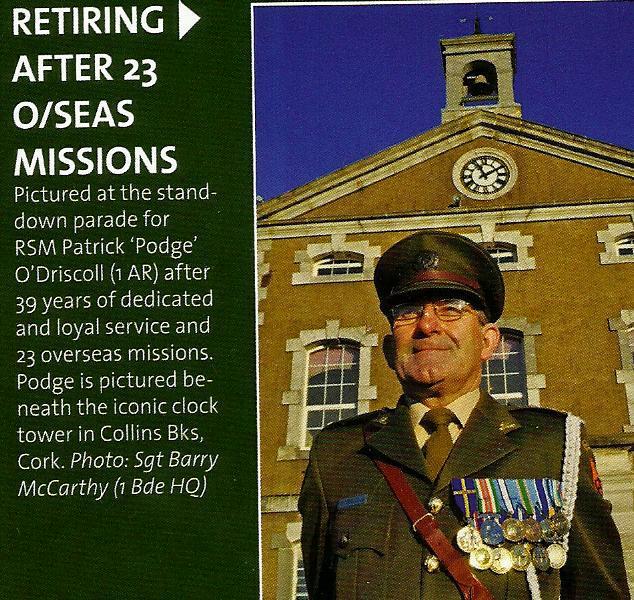
"Pictured at the Stand Down Parade for RSM Patrick "Podge" O Driscoll (1st AR)
after 39 years of dedicated and loyal service and 23 Overseas Missions.
Podge is pictured beneath the iconic clock-tower in Collin's Barracks, Cork.
Photo: Sgt Barry McCarthy, (1st BDE HQ.)"
Congratulations, and well done that man

Kevin in Deva.
0 -
At least you got a nice piece of Italian Victory Medal ribbon.

Hopefully it did not cost you too much.
Kevin in Deva.
0 -
Ho Claudio2574,

thanks for the link, my thoughts are the star has been added during the Mussolini period?
Or possibly by mistake?
0 -
Sad to see such a nice group in need of some T.L.C.
Kevin in Deva.
0




Queen Marie Cross
in Central & Eastern European States
Posted · Edited by Kev in Deva
Queen Marie of Romania wearing the Order.
Kevin in Deva.